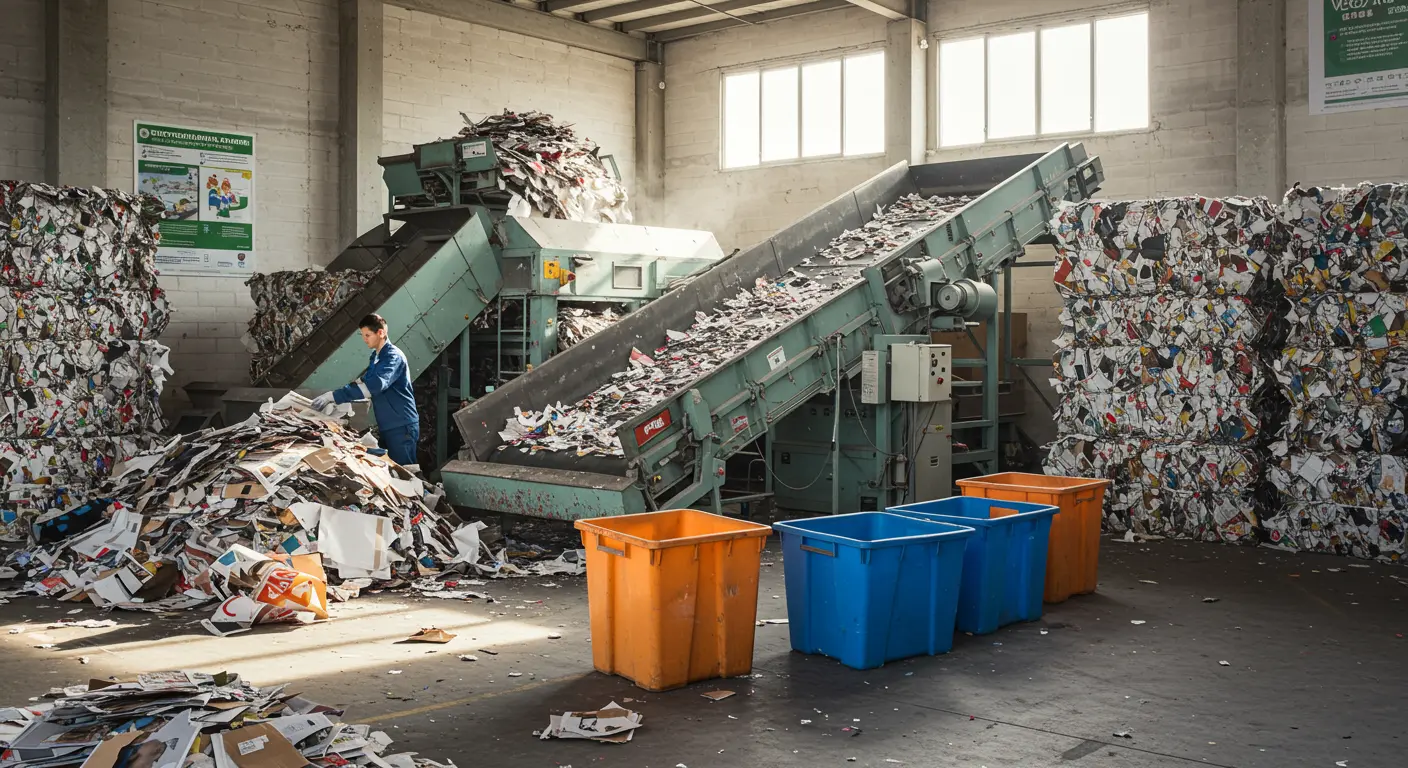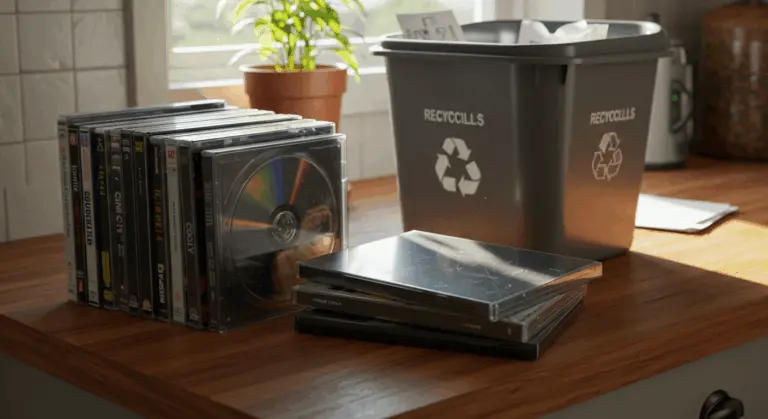Shredding and De-inking Paper
Once sorted, paper undergoes shredding—a mechanical breakdown that transforms it into small pieces. This dramatically increases the fiber surface area, preparing the material for the next step. The shredded fragments are then combined with water and specialized chemicals, creating a slurry known as pulp. This mixture becomes the foundation for all new paper products.
The pulp then enters the de-linking phase, where compressed air creates a flotation system. Bubbles rise through the slurry, capturing ink particles and carrying them to the surface. Workers skim off this ink-laden foam, and the remaining pulp may undergo washing or bleaching treatments to achieve optimal brightness and purity.
The effectiveness of this process directly affects the final product’s quality. Food residue and adhesive contaminants can sabotage the entire operation—which makes the initial sorting stage essential. The clean pulp is now ready to be made into new paper products.
Collection and Sorting of Paper
Paper recycling starts with collection systems spanning homes and businesses—from dedicated recycling bins to community drop-off points. These systems vary dramatically by location. Some areas enjoy convenient curbside pickup, while others depend on centralized collection hubs. Once gathered, the paper travels to sorting facilities where the real transformation begins.
At these facilities, paper gets categorized by type—a crucial step since each variety possesses distinct fiber qualities demanding specific processing approaches. This classification affects the final product’s quality. The key categories include:
Sorting also serves another important purpose: preventing contamination from plastics and food waste. Modern facilities employ a sophisticated blend of manual inspection and advanced optical sorting technology to achieve remarkably pure separation.
Benefits of Recycling Paper
Paper recycling offers significant environmental and economic benefits:
How to Prepare Paper for Recycling
Effective preparation is essential for successful recycling. These guidelines will ensure your paper gets a second life:
-
Know Your Local Rules: Requirements differ significantly between communities. Always verify which paper types your program welcomes—thermal receipts and plastic-lined coffee cups typically get rejected.
-
Maintain Cleanliness and Dryness: Food-soiled materials like greasy pizza boxes ruin recycling operations. Wet paper proves equally problematic—moisture weakens fibers and encourages mold growth, contaminating entire batches.
-
Strip Away Non-Paper Elements: Small staples pose no problem, but larger foreign materials—plastic bindings, envelope windows, excessive tape—must go. Don’t forget to flatten cardboard boxes for efficient transport.
-
Preserve Fiber Length: Longer fibers command higher value in recycling markets. When document shredding becomes necessary, contain the pieces in a paper bag and verify your local program accepts shredded material.
-
Start with Reduction: Going paperless with bills and statements has the biggest environmental benefit. When purchasing paper products, prioritize recycled content options—this choice supports the circular economy.
Local Recycling Programs and Resources
Multiple resources can connect you with local paper recycling programs:
-
Municipal Resources: Your city or municipality’s website provides the most reliable information on pickup schedules, drop-off sites, and material acceptance guidelines.
-
Digital Locator Services: Platforms such as Earth911 and Recycle Nation offer zip code-based searches for nearby recycling facilities.
-
Commercial Take-Back Options: Select office supply retailers provide paper recycling services, while some manufacturers operate take-back programs for their packaging materials.
-
Commercial Solutions: The Recycler Database and similar platforms connect businesses to commercial haulers specializing in high-volume paper collection.
-
Regional Programs: State agencies often maintain region-specific programs—Massachusetts’ Recycle Smart MA serves as one notable example.
Keep in mind that recycling programs vary significantly between communities, so always verify local requirements before participating.
Beyond traditional recycling, paper can find new purpose through creative DIY projects:
-
Custom Paper Creation: Transform scrap paper into personalized stationery by blending it with water, then pressing and drying the resulting pulp on mesh screens.
-
Sculptural Crafting: Combine shredded newspaper with flour-water paste to sculpt everything from decorative bowls to intricate masks and seasonal ornaments.
-
Instant Transformations: Convert cereal boxes into charming gift tags, transform paper rolls into practical desk organizers, or repurpose newspapers as environmentally conscious gift wrap.
-
Family Projects: Craft seed paper by embedding flower seeds into homemade sheets, or fashion unique jewelry by rolling colorful paper strips into decorative beads.
These creative endeavors extend paper’s lifespan before it enters industrial recycling streams. They also encourage creativity and environmental awareness while giving paper a second life before recycling.




